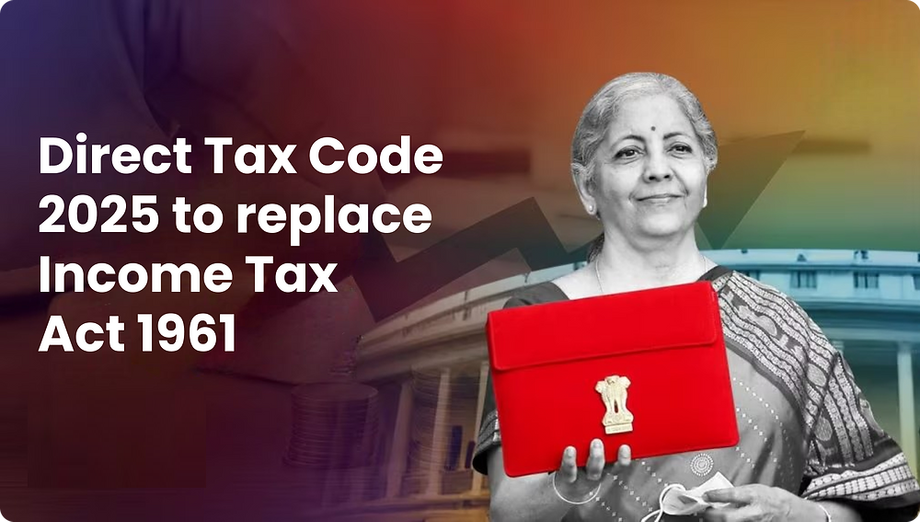India is gearing up for a monumental shift in its taxation system with the introduction of the Direct Tax Code 2025. Set to replace the Income Tax Act of 1961, this reform will take effect in April 2025, transforming how individuals and businesses approach tax compliance. The direct tax code aims to modernize India’s tax framework, enhance transparency, and ensure a simpler and fairer process. By addressing long-standing complexities and reducing loopholes, this reform promises to usher in a new era of financial governance.
Why the Direct Tax Code is Crucial
The current tax system has been criticized for being overly complex and outdated. The Direct Tax Code 2025 addresses these issues by simplifying tax laws and broadening the tax base. At present, only 1% of India’s population pays income tax. With the direct tax code, the government aims to increase this figure to 7.5%, ensuring more citizens contribute to national development. By reducing exemptions and streamlining compliance, the new framework will promote voluntary adherence while minimizing tax evasion.
Key Reforms Under the Direct Tax Code 2025
The DTC 2025 introduces several pivotal changes designed to simplify the tax process for individuals and corporations. These reforms aim to make compliance easier and foster greater equity in tax collection.
Simplified Residential Status
The direct tax code eliminates the confusing “Resident but Not Ordinarily Resident” (RNOR) category. Taxpayers will now be classified as either residents or non-residents, clarifying their tax obligations.
Unified Financial Year Terminology
Under the direct tax code 2025, terms like "Assessment Year" and "Previous Year" will be replaced by "Financial Year." This alignment with global standards simplifies tax filing and improves clarity.
Capital Gains Taxation
The direct tax code integrates capital gains into regular income. While this simplifies tax calculations, individuals with significant capital gains may face higher tax liabilities.
Renamed Income Categories
The Direct Tax Code 2025 introduces clearer income categories. For instance, “Income from Salary” becomes “Employment Income,” helping taxpayers better understand their classifications.
Standardized Corporate Tax Rates
In a move to promote fairness and attract investment, the direct tax code establishes a single tax rate for domestic and foreign companies. This reform creates a level playing field and enhances India’s appeal to global businesses.
Reduced Exemptions and Deductions
A central theme of the direct tax code 2025 is the reduction of exemptions and deductions. By closing loopholes, the new system ensures fairer tax contributions across all income levels.
Expanded Scope of TDS and TCS
The direct tax code broadens the application of Tax Deducted at Source (TDS) and Tax Collected at Source (TCS). This ensures timely payments and minimizes underreporting, strengthening compliance.
Inclusive Tax Audits
The Direct Tax Code 2025 allows Company Secretaries (CS) and Cost and Management Accountants (CMAs) to conduct tax audits alongside Chartered Accountants (CAs). This inclusive approach boosts professional involvement and compliance.
Streamlined Structure
The direct tax code features 319 sections and 22 schedules, compared to its predecessor’s 298 sections and 14 schedules. This streamlined structure makes navigation and understanding easier for taxpayers.
Controversial Political Party Exemptions
Despite its sweeping reforms, the direct tax code 2025 retains tax exemptions for political parties. This decision has sparked debates about fairness and transparency in the new tax framework.
Implications for Professionals and Students
The transition to the direct tax code will significantly impact professional exams like CA, CS, and CMA. Students will continue studying the Income Tax Act of 1961 until March 2026 to facilitate a smooth transition. This overlap ensures professionals are well-prepared for the new system.
Conclusion
The Direct Tax Code 2025 represents a transformative step in India’s tax landscape. By simplifying laws, broadening the tax base, and reducing exemptions, the direct tax code aims to foster voluntary compliance and fairness. As India prepares for this monumental reform, both taxpayers and professionals stand to benefit from a modernized, transparent, and efficient taxation framework.

